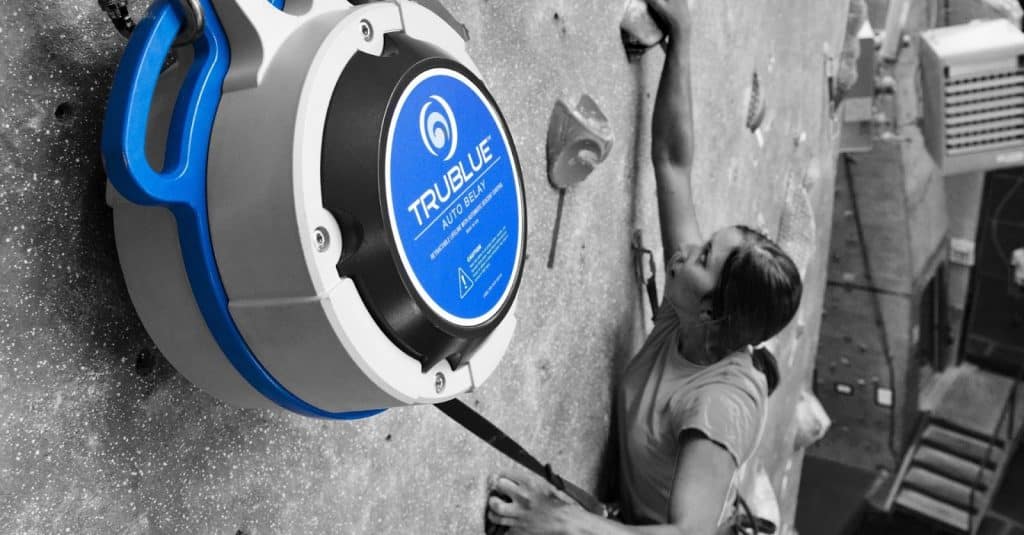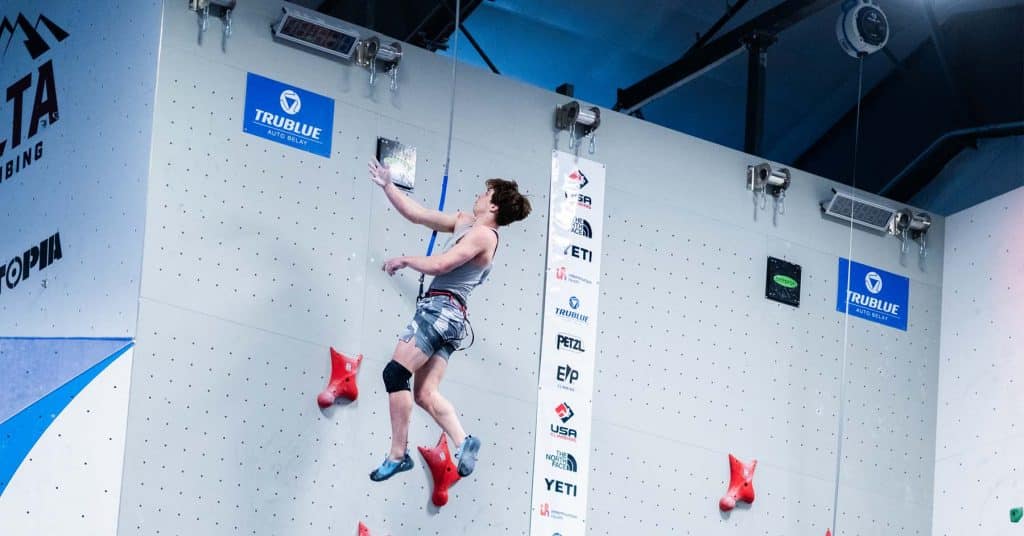Put a group of kids together, and it's guaranteed they will eventually challenge each other to a race. Similarly, if you put a group of kids together in a climbing gym, it's not going to be long before someone says, "I'll race you to the top!" It's only natural then that one of the many styles of climbing is speed climbing because even adults want to race to the top.
What is Speed Climbing?
Speed climbing is one form of indoor rock climbing where athletes compete for the fastest time to the top of the climbing wall. The competition takes place on a standardized climbing wall, and the same holds and route are used each time for consistency across competition. There are athletes that train specifically for these events and for international speed climbing competitions. If that's all you know, then you'll be able to watch speed climbing competitions and follow along, but beyond that there is plenty more to speed climbing than meets the eye. Here are the basics that you need to know to be in the know about speed climbing.
How High is the Speed Climbing Wall?
The wall for international competition is 15 meters (49 feet) high and has two climbing lanes that are each 3 meters (10 feet) wide. There are 10 meter (33 feet) tall speed climbing walls, but the records for speeds on those walls are not tracked internationally. The wall must be overhanging at exactly 5 degrees, and the wall surface is required to have a specific texture. The climbing route itself is always the same with the same holds made by a certified manufacturer. Even the timing system and belay methods are standardized.
Why is Everything Standardized?
The International Federation of Sport Climbing (IFSC) is the organization that regulates and promotes climbing competitions around the world. The IFSC sets the standards for speed climbing and other climbing competition formats and determines which events are sanctioned for world record attempts.
This standardization allows the speed climbing results of one climber to be compared across the world and over time if the competitions are sanctioned. These sanctioned events are opportunities for climbers to challenge the existing world record. Speed climbing used to take place on routes that changed with each competition, but then the winner could only claim the fastest time for that one competition. There was no world record or even personal records because the route was unique every time.
While there is no official grade for the standardized speed climbing route, it is estimated to be around a 5.10a to 5.10c. That grade means less when competitors are climbing as fast as possible. Elite climbers don't touch every hold and seem to fly up the wall instead of climb it. They have trained over and over on that route so that each individual move is memorized and can be executed as a reflex instead of a conscious action.
Is Rock Climbing in the Olympics
Rock climbing will be making its debut at the Olympics in the 2020 games in Tokyo, Japan. Competitors will climb in three different events featuring three styles of climbing: sport climbing, bouldering, and speed climbing. The climber with the best overall score from these three events will take home the climbing gold medal.
There was plenty of excitement when climbing was announced as one of the new sports to be included at the Toyko games, but professional climbers have varying opinions about the format that ranges from excited to disappointment. The mixed emotions stem from the fact that the three styles of climbing are very different, and elite climbers almost always focus on one discipline. It's rare to find a climber who currently trains for all three. Of course the gleam of gold might change the way young climbers and gyms think about climbing, training, and the three styles.
The Future of Speed Climbing and Training
According to the Climbing Business Journal, speed climbing is the fastest-growing portion of indoor rock climbing. That means each year new gyms are being built and including speed walls in their builds. Plus, existing gyms are creating speed walls in their existing space. This comes from the growing popularity in the sport and the increase in youth teams. These youth teams practice and compete in speed climbing.
As an adventure company focused on innovation and engineering, Head Rush Technologies developed a new version of the TRUBLUE Auto Belay to meet the growing demand for speed climbing auto belays. The TRUBLUE Speed Auto Belay takes the same reliability and reputation that TRUBLUE is known for and adds an extra dose of speed. The TRUBLUE Speed utilizes the same magnetic braking on the way down that climbers know and love. This makes it the perfect auto belay for speed climbing training and competitions.



